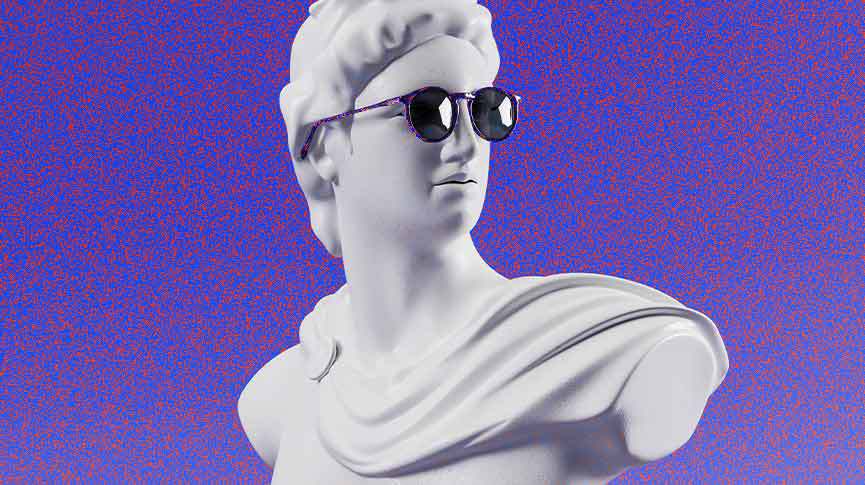The History of Sex Toys

Some are stashed away in a bedside table drawer. Others are conveniently hidden under pillows. You may find a box full of them in the back of someone’s closet.
What exactly are we talking about?
Sex toys. For many of us, our most trusted friends and allies. The one tool you can always lean on whether you’re having a bad day, need some help falling asleep, or looking to spice up your sex life (by yourself, or with partners).
Now we’re seeing a growing market for high tech, robotic devices that allow you to customize your pleasure settings, but it hasn’t always been that way.
When and where did “sex toys” originate from? What are some of the pivotal shifts we’ve seen in the industry? Where might it go in the future? Let’s dive in, and find out.
Myth Busters
One of the most commonly spread myths around the origin of vibrators is that they were used in the early 20th century as a means of treating women with “hysteria”.
While women and many other people have been subject to all sorts of medical malpractice and sexist institutions, this one’s validity appears to be murky.
Some sources claim that while indeed the vibrator was invented for this sort of purpose, the ailment treated was actually chronic anxiety, or sexual frustration.
Because female pleasure was not at the forefront of Victorian medical practices, pelvic stimulation was not seen in a sexual context. Thus the subsequent vibrating tools to make stimulation easier, were not actually seen as “sex toys”.
Others say that this is simply false. Those medical providers would in no way have prescribed or performed a sexual practice on their patients for any purpose.
I think there’s probably some truth to either hypothesis, especially given that ethical standards that would have prevented this practice were not in place at the time.
Either way, somewhere down the line, a variety of buzzing machines were invented, used, and eventually marketed for clitoral stimulation.
We Vibin
If your shower head or bath faucet was one of your first introductions to clitoral stimulation from an outside source – you’re not alone.
Introduced in France in the 1700s was the “pelvic douche device”. This far from sexy name was essentially a manually powered hose that would thrust water towards the uterus, in an effort to keep it from “wandering”.
An assortment of other “vibrating devices” we’re crafted, being powered with everything from compressed air, to coal, to hands. These we’re typically marketed to treat any range of medical conditions from crow’s feet to tuberculosis.
In the early 1880s, British doctor Joseph Mortimer Granville created the first modern vibrator. Contrary to popular belief, this device was marketed towards treating chronic pain or nerve problems, and erectile dysfunction in men.
In his instructions for the device, Dr. Granville specifically told people not to use it for clitorial stimulation. Of course, people found a way.
This sort of rhetoric is still used in places where sex toys are not technically “legal”. Suppliers will instead market them as personal massagers or wands.
Jump to the early to mid-1900’s – modern-day porn began spreading through photographs and videos. Featured in many of these pieces was you guessed it – vibrators. Now there was no doubt what these devices were being used for.
By the late 1960s, vibrators we’re now being sold at sex stores, and in the coming decade, began to evolve into what we now know as the modern vibrator with the invention of the “Hitachi Modern Wand”.
Prehistoric Phalices
Now to backtrack, of course, sex toys didn’t start with ye old vibrator. Phallic objects used for penetration and stimulation have been around long before Victorian “wandering uterus” practices.
As with most things, especially regarding women’s history, the accounts of prehistoric dildos is widely ambiguous.
While many of these dildo appearing objects may have been used ceremonially, or for religious purposes, it’s pretty safe to assume that they were also used in a sexual context.
Archaeological evidence found suspically dildo shaped object in Germany, dating back 28,000 years ago.
Other objects that have been unearthed include a 2,000-year-old jade “dildo” found in China, bronze strap on devices, and French ivory dildos complete with a squirting device to simulate ejaculation.
The ancient Indian Kama Sutra sexual text advised the use of “penis extenders” that were often made with leather, wood, buffalo horn, and even precious metals like gold and silver.
Later on, but before more modern rubber dildos, they began to be crafted from wood, metal, glass, and stone.
In the 1960s, Gosnell Duncan, who became paralyzed from the waist down after a serious injury, embarked on a crusade to perfect the modern silicone dildo.
This was in tandem with his activism in disability movements, to make penetrating devices more accessible.
Ambiguous Arousal
While the history of sex toys still remains somewhat unclear, it’s safe to say that female pleasure is not a modern concept, even if it has become more widely accepted in recent years.
Even if the usage of many of these ancient relics remains ambiguous, one things for certain – humans have, and always will have a fascination with sex, stimulation and genital shaped objects.

Natasha (she/her) is a full-spectrum doula and health+wellness copywriter. Her work focuses on deconstructing the shame, stigma, and barriers people carry around birth, sex, health, and beyond, to help people navigate through their lives with more education and empowerment. You can connect with Natasha on IG @natasha.s.weiss.


